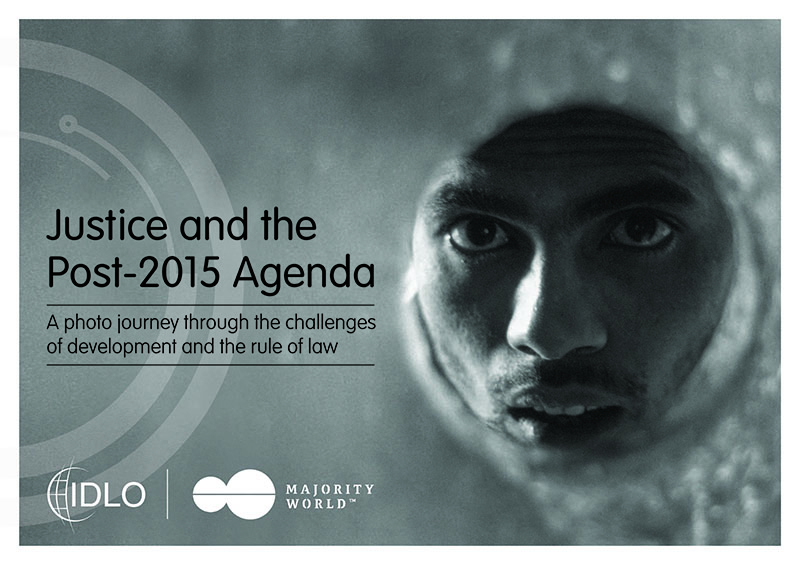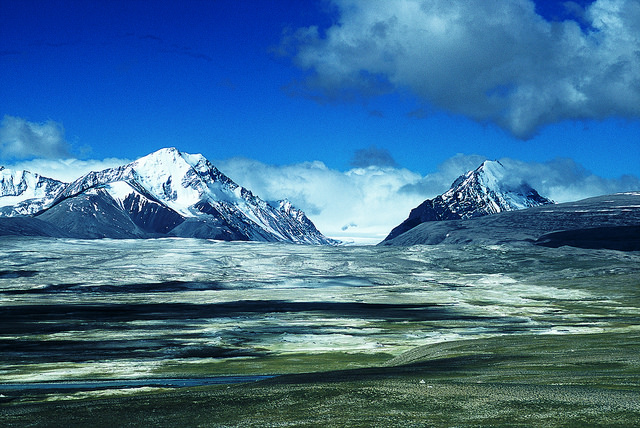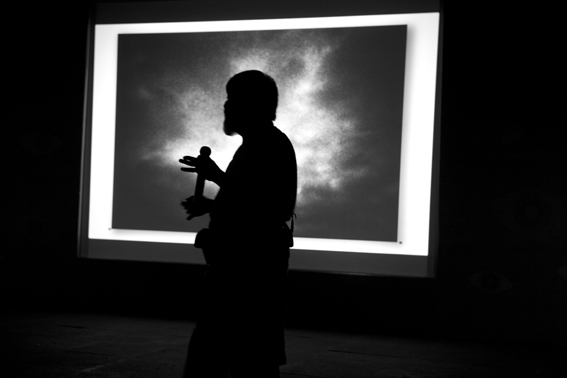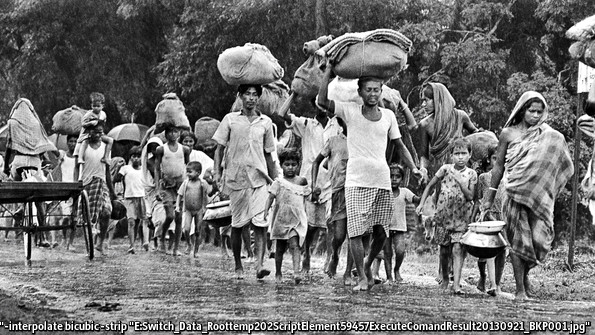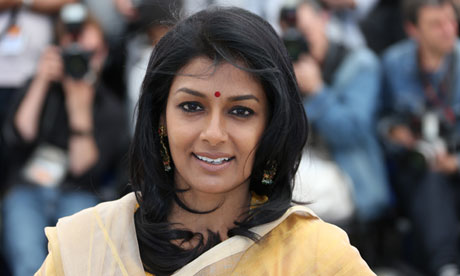Location : Nepal, India and Bangladesh
: Nepal, India and Bangladesh
Reporting Period: 26 April?15
Location : Nepal, India and Bangladesh
: Nepal, India and Bangladesh
Detail Information :
:
An earthquake rattled the Dhaka, Chittagong, Barisal, Rajshahi, Dinajpur, Rongpur, Kushtia and different parts of the country on April, 25. The 7.8 magnitude earthquake’s epicenter was 81 kilometers (50 miles) northwest of Kathmandu, Nepal at a depth of 9.3 moles. The Meteorological Department stated that the epicenter of the earthquake was 745 km north-west of Bangladesh. Tremors were felt also across the region, in India, Tibet, China, Tibet and Pakistan (Prothom Alo; bdnews24.com; the Daily Star, April, 25; and CNN, April, 26).
parts of the country on April, 25. The 7.8 magnitude earthquake’s epicenter was 81 kilometers (50 miles) northwest of Kathmandu, Nepal at a depth of 9.3 moles. The Meteorological Department stated that the epicenter of the earthquake was 745 km north-west of Bangladesh. Tremors were felt also across the region, in India, Tibet, China, Tibet and Pakistan (Prothom Alo; bdnews24.com; the Daily Star, April, 25; and CNN, April, 26).
Another Earthquake followed the earlier one as an aftershock at 13.08 on 26th April to hit Nepal with a magnitude of 6.7 along with Bangladesh and India (Prothom Alo; bdnews24.com; the Daily Star, April, 26; and CNN, April, 26).
as an aftershock at 13.08 on 26th April to hit Nepal with a magnitude of 6.7 along with Bangladesh and India (Prothom Alo; bdnews24.com; the Daily Star, April, 26; and CNN, April, 26).
Damage Information :
:
Bangladesh: In Bangladesh, total 5 people were killed and up to 100 people were injured while evacuating. One female was killed by collapse of wall made of mud along with other two women were killed in Pabna and Dhaka. One worker was killed along with 50 injuries in Savar. Another death toll occurred in Sunamganj. 50 readymade garment workers were injured at Ishwardi (Situation Report, DDM, April 25; Prothom, April, 26). 23 buildings
women were killed in Pabna and Dhaka. One worker was killed along with 50 injuries in Savar. Another death toll occurred in Sunamganj. 50 readymade garment workers were injured at Ishwardi (Situation Report, DDM, April 25; Prothom, April, 26). 23 buildings were damaged in all over Bangladesh (Situation Report, DDM, and April, 25).
were damaged in all over Bangladesh (Situation Report, DDM, and April, 25).
| Earthquake, 25 April: Damage and loss in Bangladesh | ||
| Death | Injury | Structural Damage |
4 persons died (1 inSavar, Dhaka; 1 in Bogra; 1 in Sunamganj; &1 in Pabna) died (1 inSavar, Dhaka; 1 in Bogra; 1 in Sunamganj; &1 in Pabna) |
? 10-12 workers injured atMission Group Garment GarmentFactory in Savar ? 2-3 workers injured at Kardena garment in Comilla |
? Five story building develops?cracks in Bangla Bazar, Dhaka? Six story building tilted in Nawabpur, Dhaka ? Five story building  tilted in Mirpur, Dhaka tilted in Mirpur, Dhaka? Seven story building tilted in Keraniganj, Dhaka. ? A hotel  tilted in Baridhara , Dhaka tilted in Baridhara , Dhaka? 2 commercial buildings  tilted in Narayanganj tilted in Narayanganj? 1 garment factory tilted in Gazipur ? 1 school  damaged in Gopalganj damaged in Gopalganj? 10 story commercial building with cracks in Feni ? A building with?cracks in Nabiganj, Sylhet ? A school tilted in Gangachara upazila, Rangpur ? 2 schools damaged in Gaibandha ? 2 buildings damaged in Rajshahi ? 4 buildings tilted in Naogaon ? Crack found at school in Sonatola, Bogra |
| Source: Disaster situation report, DDM, April, 25, 2015 | ||
Nepal: The 7.8 magnitude quake along with a strong
with a strong aftershock of magnitude 6.6 followed by nearly three dozen other aftershocks struck an area of central Nepal between the capital, Kathmandu, and the city of Pokhara on Saturday morning (April 25, 2015). The Home Ministry identifies that more
aftershock of magnitude 6.6 followed by nearly three dozen other aftershocks struck an area of central Nepal between the capital, Kathmandu, and the city of Pokhara on Saturday morning (April 25, 2015). The Home Ministry identifies that more than 2263 people were killed and 4,718 people were injured (till 17.00, CNN, April 26) which mainly include only information
than 2263 people were killed and 4,718 people were injured (till 17.00, CNN, April 26) which mainly include only information of cities. The earthquake flattened homes, buildings and temples, causing widespread damage along
of cities. The earthquake flattened homes, buildings and temples, causing widespread damage along with wrecking many historic buildings include the Dharahara tower, the landmark nine- story structure. Kathmandu airport was shut till 4 pm, Indigo, SpiceJet flights forced back after fresh tremors jolt Nepal (India today
with wrecking many historic buildings include the Dharahara tower, the landmark nine- story structure. Kathmandu airport was shut till 4 pm, Indigo, SpiceJet flights forced back after fresh tremors jolt Nepal (India today April, 26) Mobile phones, Electricity and other communications were disrupted. Around 6.6 million people are affected in Nepal according to the UN Office in Kathmundu (India today
April, 26) Mobile phones, Electricity and other communications were disrupted. Around 6.6 million people are affected in Nepal according to the UN Office in Kathmundu (India today April, 26). The Government of Nepal declared the National Emergency. (ekantipur.com, April, 26)
April, 26). The Government of Nepal declared the National Emergency. (ekantipur.com, April, 26)
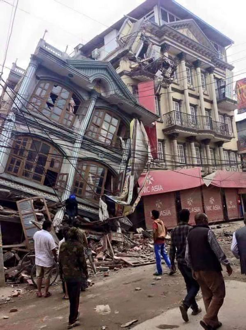
Building tilted due to earthquake in Nepal
tilted due to earthquake in Nepal
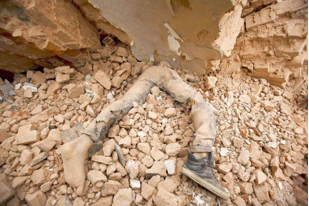 ? A man trapped under a building
? A man trapped under a building in Nepal
in Nepal
Government of Bangladesh provided 10 tons of reliefs including food (biscuit, water, and dry foods), medical (medicine) and humanitarian help (tent, blanket) along with a team of 34 members consisted of
consisted of
6 groups of physicians and Bangladesh Air force crew (bdnews24.com, April, 26; Prothom Alo, April, 26).
of physicians and Bangladesh Air force crew (bdnews24.com, April, 26; Prothom Alo, April, 26).
The U.S. government is providing $1 million in immediate assistance to Nepal. Aid agencies expressed concern for the welfare of survivors in the coming days, as overnight temperatures were expected to drop and people were forced to make do without electricity, running water and shelter. (US Geological Survey, CNN, April, 26; BBC News, April 26 and Prothom Alo, April 25).
to drop and people were forced to make do without electricity, running water and shelter. (US Geological Survey, CNN, April, 26; BBC News, April 26 and Prothom Alo, April 25).
The UK has deployed a team of humanitarian experts to Nepal to provide urgent support. A number of
urgent support. A number of
British charities are assembling disaster teams to join the rescue effort.
Oxfam, Christian Aid, Save the Children, the British Red Cross and Plan International UK are assessing the humanitarian need in the disaster struck area.
the Children, the British Red Cross and Plan International UK are assessing the humanitarian need in the disaster struck area.
India: Officials in India confirmed at least 52 deaths in three states from the Earthquake. (bdnews24.com, April, 26)
at least 52 deaths in three states from the Earthquake. (bdnews24.com, April, 26)
Tibet: At least 17 people were killed and 53 injured along with roads buckled and buildings collapse in
collapse in
Tibet. (bdnews24.com, April, 26
Avalanches in Himalayan: Twenty two (22) people have killed along with 237 missing on Mount Everest by avalanches caused by the Earthquake, the mountain’s worst-ever disaster (BdNews.24.com, April, 26)
(22) people have killed along with 237 missing on Mount Everest by avalanches caused by the Earthquake, the mountain’s worst-ever disaster (BdNews.24.com, April, 26)
Reporting from: NIRAPAD Secretariat
4/16 (1st Floor), Humayun Road, Block-B
Mohammadpur, Dhaka-1207
Bangladesh
Download pdf

